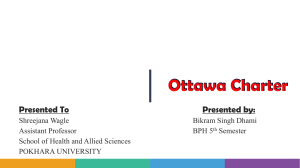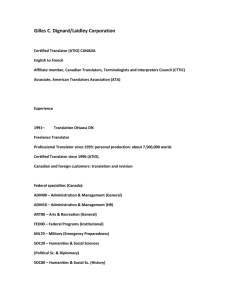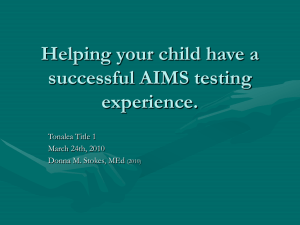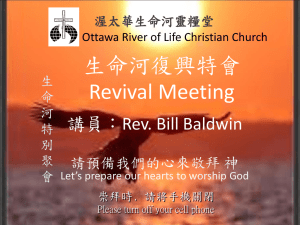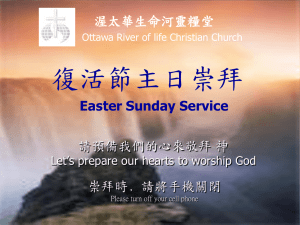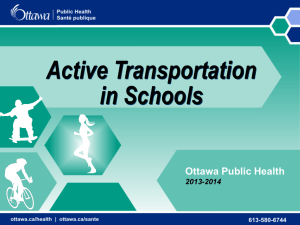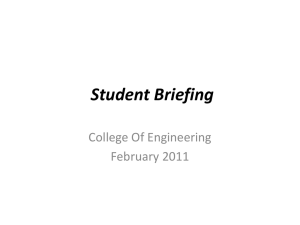The Ottawa Charter
advertisement
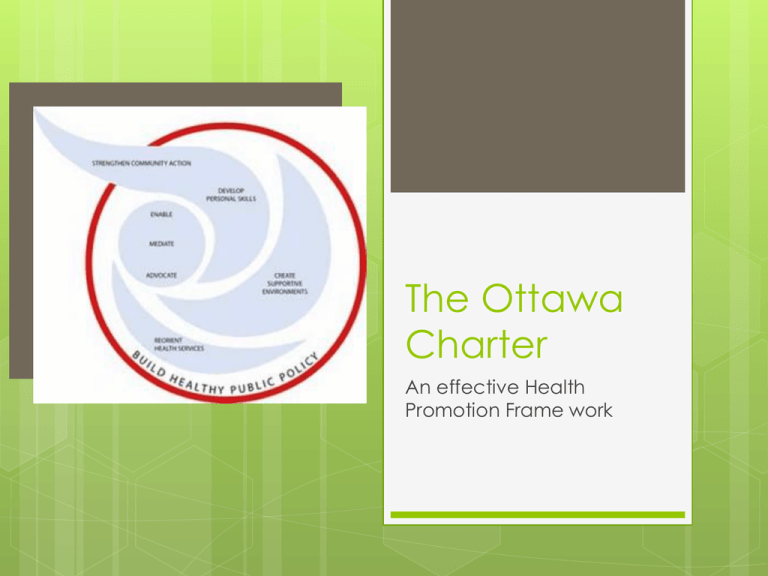
The Ottawa Charter An effective Health Promotion Frame work What is the Ottawa Charter? Developed in 1986 as a part of the “Health For All” strategy in Ottawa, Canada. It forms apart of the new public health approach and based on the social model of health. Aims to influence how new programs and planned and delivered through clear definitions, actions and positive involvement. Ottawa Charters Main Points Health results from: Health results from: Health Promotion: Health Promotion is: perquisites for The health: The perquisites for health are: Advocates: Advocates: The interaction of many social determinants The process of enabling people to increase control over and improve their health Peace, shelter, food, education, income, stable ecosystem, sustainable resources, social justice, equity Good health is a major resource for social, economic and personal development and an important dimension of quality of life. Enables: Enables: Focuses on equity in health. Sharing opportunities and resources will allow all to achieve their fullest health potential. Mediate: Mediate: Involve all people in health promotion and health care, across all areas of health. Mediate for the pursuit or health. Five Action Areas Building Healthy Public Policy Create Supportive Environments Strengthen Community Action Develop Personal Skills Reorient Health Services Building Healthy Public Policy What does it mean? Ensuring decisions made at all levels of government/organisations that world towards health improvement. What is the aim? Aims to put health on the agenda for policy makers and to ensure legislation/policies have the health of the population in mind. What does it involve? Identifying the influence policy has on health and from this influencing/lobbying for change. Who is responsible? Governments, public bodies, unions, NGO’s, lobby groups. Creating Supportive Environments What does it mean? Making the places people live, work and play a major source of good health. What is the aim? Aims are to take care of each other, our communities and our environments. This will assist to provide the support necessary to increase the ease of health enhancing decision making. What does it involve? It involves support networks and community services. Eg emotional or financial support and specialised programs. Who is responsible? This is a global responsibility that needs to be undertaken by governments, communities, employers, unions and families. Strengthen Community Action What does it mean? Providing communities the power to identify their own health priorities and take action in collaboration with other agencies. What is the aim? Aims for communities to establish “ownership” of the health issues specific to their population/ area. What does it involve? Empowering communities by providing information, allowing for lobby groups providing communication to express concerns with all levels of government, learning tools and access to funding. Who is responsible? Community and local agencies including schools, levels of government, groups/clubs and planning bodies. Developing Personal Skills What does it mean? Supporting the personal and social development of the individual. What is the aim? Aims are to educate, provide health information and improve decision making, communication and life skills. What does it involve? Modifying personal behaviour to enable people to learn health protecting and enhancing skills such as assertiveness, literacy, language Who is responsible? Facilitated in Schools, home, work and community through educational, professional, commercial and voluntary bodies. Reorienting Health Services What does it mean? Adjusting the direction of health promotion approaches from traditional ‘curative’ approaches to a more ‘preventative’ What is the aim? Aim is to establish a ore holistic attitude of health professionals. To look at the wellbeing of the whole person. What does it involve? Identifying the range of health services in an area, improving the access to such services and moving towards a preventative approach. Eg lifestyle prescriptions Who is responsible? Individuals, community groups, health professionals, health services and governments. Strategies within the Action Areas Building Building Healthy Healthy Public Public Policy Policy • • • • Random breath testing Licensing points systems Legislation on Blood alcohol levels while driving Labelling on food packaging Creating Supportive Supportive Environments Environments • • • • 40kph school zones Local traffic speed regulations Laws limiting number of passengers for P plate drivers Provision of counsellors in schools Strengthen Community Community Action Action • • • • Lollipop people on community school crossings Stop, Revive, Survive campaign Active After School Communities NSW Live Life Well Community Program Developing Developing Personal Personal Skills Skills • • • New P-Plate laws ( logged hours, probation period) Road safety campaigns Education programs within a school setting • • • First aid training Health professionals working within a school NSW Healthy School Canteen Strategy Reorienting Reorienting Health Health Services Services
